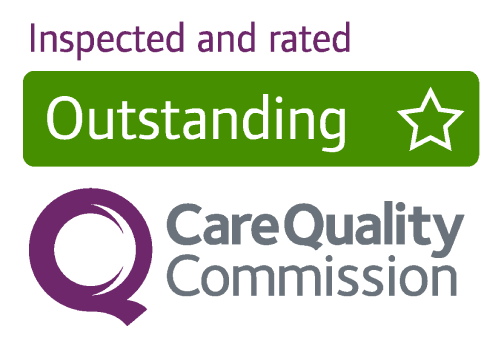
June 9, 2022
Short protocol IVF vs long protocol IVF: understanding the differences
Trying to conceive through IVF? You may have heard your fertility doctor mention a "long protocol" or "short protocol" for IVF. These refer to two different medication plans used to stimulate the ovaries during in vitro fertilisation (IVF) treatment. Both short and long protocols aim to help a woman produce multiple eggs for IVF, but they differ in timing, medications, and duration.
In this article, we’ll break down short protocol IVF and long protocol IVF, explain their pros and cons, and help you understand which might be suitable for your situation. Our goal is to maintain a supportive tone and keep medical terms clear and simple, so you can approach your IVF consultation feeling informed and confident.
Navigation guide
2. Long protocol IVF (GnRH agonist protocol)
3. Short protocol IVF (GnRH antagonist protocol)
4. Long vs short protocol: key differences and similarities
5. Which protocol is right for you?
6. Considerations for women and men in the IVF process
7. Next steps on your fertility journey
1. What is an IVF protocol?
In IVF fertility treatment, a protocol is essentially the treatment plan or regimen of fertility medications and steps that your doctor designs for you. It outlines how and when drugs will be used to stimulate the ovaries, suppress natural hormones if needed, and prepare for egg collection.
Every patient is different – factors like age, ovarian reserve (e.g. your AMH level, which is a hormone indicating egg supply), underlying fertility issues, and even your previous response to fertility drugs all influence which protocol is recommended.
There is no one-size-fits-all in IVF, so doctors at HSFC (Harley Street Fertility Clinic) will create a tailored treatment plan for your specific needs.
The two most common ovarian stimulation protocols are the long protocol and the short protocol (sometimes called the agonist and antagonist protocols, respectively). Before diving into how they differ, let's look at each one.
2. Long protocol IVF (GnRH agonist protocol)
Long protocol IVF – also known as a GnRH agonist protocol – is a more traditional IVF regimen that typically spans about 4–5 weeks from start to egg collection. It’s termed “long” because it includes a downregulation phase before the usual stimulation phase. Here’s what this means:
Downregulation phase
You begin by taking a medication to turn off your natural menstrual cycle hormones. This usually starts around day 21 of your previous cycle (about a week after ovulation in a typical cycle).
The medication is often a GnRH agonist (such as buserelin or leuprorelin) given as a daily injection (or sometimes a nasal spray). This causes an initial surge and then suppression of the body’s reproductive hormones. In plain English, it puts your ovaries "on pause," preventing ovulation and hormone fluctuations.
After about 10–14 days on this medication, your ovaries should be quiet and inactive. You’ll usually have a baseline ultrasound (and possibly a blood test) to confirm that downregulation is complete, and your uterine lining is thin.
During this phase, some women experience temporary menopausal side effects (like mild hot flushes or mood swings) due to the hormone suppression – but this is normal and passes once the next phase begins.
Ovarian stimulation phase
Once downregulation is confirmed, you’ll start taking fertility hormone injections called gonadotrophins – typically FSH (follicle stimulating hormone) and/or hMG (human menopausal gonadotropin, which contains LH). These medications stimulate your ovaries to produce multiple follicles (each follicle could contain an egg).
In a long protocol, this stimulation phase lasts roughly 12–14 days of daily injections. During this time, you might continue the GnRH agonist in a smaller dose to keep your natural hormones suppressed (this prevents a premature ovulation).
Expect to visit the clinic for internal ultrasound scans every 3–4 days during the stimulation phase. These scans (and sometimes blood hormone levels) let the doctors monitor how your follicles are growing and adjust medication doses if needed. The goal is to grow a good number of healthy follicles ready for collection.

Trigger and egg collection
After around 2 weeks of stimulation injections, once scans show that your follicles have reached the right size, the final “trigger” injection is given. This is not unique to the long protocol – every IVF cycle uses a trigger shot. This is explained separately below.
In brief, the trigger shot (such as hCG or a GnRH agonist dose) will mature the eggs and prepare them for ovulation. Timing is critical: about 36 hours after the trigger, your doctor will retrieve the eggs in a minor procedure called egg collection. (At HSFC, egg collection is done under sedation for your comfort.)
On the same day, the male partner provides a sperm sample so the eggs can be fertilised in the lab. After egg collection, the remaining steps like fertilisation, embryo development, and embryo transfer are the same for both long and short protocols – these steps are discussed later, since they apply to everyone.
In summary, the long protocol builds in an extra phase to take control of your cycle before stimulation. This extended timeline can be a bit more demanding (more days of injections and clinic visits) and it introduces a pause that some find inconvenient.
Historically, the long protocol was considered the “gold standard” because the complete hormone suppression gives doctors a blank slate to then stimulate the ovaries in a controlled way. Many women with regular cycles and good ovarian reserve responded well to the long protocol. It was believed it could yield a higher number of eggs or better synchronisation of follicles.
Today, long protocols are still used, but less often than before. They may be chosen in certain cases – for example, if a patient had a suboptimal response to other protocols, or if precise scheduling is needed. It’s also sometimes used for specific medical reasons; for instance, women with endometriosis might benefit from the suppressive effect of a long downregulation.
Your doctor will advise if a long protocol is appropriate for you.
Pros of the long protocol
One advantage of the long protocol is that it allows very thorough hormonal control. By silencing the natural cycle first, doctors can potentially reduce unforeseen hormone surges. This can be helpful in some patients who need that extra regulation.
Also, because it was widely used for many years, there’s plenty of data behind it. It can be suitable for women with regular cycles and good ovarian reserve, and some clinics still prefer it in certain situations.
Cons of the long protocol
The obvious downside is that it takes longer – about 4–5 weeks of treatment before the eggs are collected. This means more days of injections (the downregulation phase plus stimulation phase).
In total, a long protocol might involve more injections than a short protocol (since you might be injecting medications for an extra 2+ weeks). The long protocol’s downregulation phase can also cause those temporary menopausal side effects, which some women find unpleasant (e.g. headaches, hot flushes, etc.).
Another consideration is ovarian hyperstimulation syndrome (OHSS) risk. In women who are high responders (like those with many follicles or polycystic ovary syndrome), the long protocol historically carried a higher risk of OHSS compared to short protocols. (OHSS is an exaggerated response to fertility drugs causing bloating, fluid shifts, and in severe cases can be dangerous.)
Finally, if time is of the essence or you’re anxious to proceed, waiting through the downregulation can feel frustrating – it adds a few extra weeks before getting to the main event of stimulation and egg retrieval.
3. Short protocol IVF (GnRH antagonist protocol)
The short protocol IVF is a newer approach (sometimes called the GnRH antagonist protocol) that has become popular and is now the preferred protocol in many clinics.
It’s deemed “short” because it skips the lengthy downregulation phase and goes straight into ovarian stimulation. The overall treatment time is about 2–3 weeks from the start of medications to egg collection, significantly shorter than the long protocol. Here’s how a short protocol generally works:
Start of stimulation
The short protocol begins at the start of your menstrual cycle rather than the cycle before. Usually, on day 2 or 3 of your period, after a baseline ultrasound to ensure your ovaries are resting (no large cysts) and your lining is thin, you’ll start hormone injections (gonadotrophins) to stimulate the ovaries.
There is no prior hormone suppression at the beginning – your body’s natural cycle is allowed to proceed initially. You will take daily FSH or hMG injections for roughly 10–12 days to grow multiple follicles. This is the same type of medication and dose you would use in the long protocol’s stimulation phase; the difference is you’re starting it right away in your cycle.
Ovulation suppression phase
In a short protocol, because your hormones are not turned off from the start, it’s necessary to prevent your body from ovulating on its own while the follicles are growing. This is where the GnRH antagonist medication comes in.
After a few days of stimulation shots (often around day 5–6 of the stimulation phase), you’ll begin a GnRH antagonist injection (such as cetrorelix or ganirelix). This antagonist drug acts quickly to block the hormones (LH surge) that would cause premature ovulation. Essentially, it keeps your eggs from releasing too early.
You’ll continue the daily antagonist shot for as long as needed, typically until the trigger day. Because the antagonist is started in the middle of the cycle, the ovarian suppression is shorter-term and only lasts as long as you’re taking that medication.
During the stimulation in a short protocol, you’ll have frequent monitoring (ultrasound scans every 2–4 days) just like in the long protocol, to check follicle growth and adjust doses. The overall stimulation phase in a short protocol is usually about 10–12 days of meds before the eggs are ready.
Trigger and egg collection
Once your follicles have developed to the right size (again, usually after about 10–12 days of stimulation injections), you’ll take the trigger injection to mature the eggs, exactly as in the long protocol scenario. Roughly 36 hours later, the egg retrieval procedure takes place to collect the eggs.
The steps of egg collection, fertilisation of eggs with sperm, embryo culture, and embryo transfer are no different in the short protocol compared to the long. The main differences of the short protocol all occur before egg retrieval, in how the eggs are prepared.
Because the short protocol eliminates the weeks of downregulation, it substantially shortens the treatment timeline. Many patients appreciate that it involves fewer total injections and appointments. There’s no “pause” at the beginning – instead, the cycle moves forward right from menstruation.
Also, by not heavily suppressing the body’s hormones upfront, the short protocol tends to be kinder on the body’s natural rhythms. Women often avoid the menopausal side effects that come with long downregulation, since the short protocol doesn’t push the body into an artificial menopause.
Another big benefit: the risk of ovarian hyperstimulation syndrome (OHSS) is lower with short protocols. Studies have shown that antagonist (short) protocols can cut OHSS risk (one large review found a 52% reduction in OHSS in high-risk women using short protocols compared to long protocols).
For this reason, doctors commonly choose a short protocol for patients who have polycystic ovary syndrome (PCOS) or others who are at risk of over-responding to fertility drugs. In fact, the short (antagonist) protocol is now considered the safer choice for high-risk patients and has largely replaced the long protocol in those scenarios.

Pros of the short protocol
The short protocol is quicker and more convenient – about 2–3 weeks of treatment versus 4–5 weeks with a long protocol. This means fewer injections overall and a shorter wait to egg collection.
There is no prolonged hormone suppression, so most women feel more physically comfortable (avoiding the mood swings or headaches that can come with the long protocol’s downregulation).
Another major advantage is the lower chance of OHSS as mentioned; because doctors can trigger ovulation in a way that reduces OHSS risk (for instance, using a special trigger shot in an antagonist cycle), the short protocol is considered gentler in high responders.
Additionally, short protocols give flexibility – if needed, the cycle can be started on short notice (since you don’t have to start meds the month before).
Many clinics, including HSFC, find that short protocols work well for the majority of patients. It’s effective across various patient types – from those with PCOS to sometimes even those with lower ovarian reserve (since you’re not suppressing their already limited hormone signals).
Cons of the short protocol
A potential drawback is that the short protocol might offer slightly less control over scheduling. Because you begin with your natural cycle, the start date depends on when your period comes (Doctors can still schedule a bit by using the contraceptive pill beforehand if needed. At Harley Street Fertility Clinic, we can use pre-treatment priming to provide a degree of control over cycle timings.) With a long protocol, clinics can more precisely plan the timeline by starting downregulation on a given date.
If a patient needs extremely tight hormonal control (for example, if prior IVF cycles saw premature ovulation or poor ovarian response), a doctor might still lean toward a long protocol or an adjusted approach. But in general, the short protocol’s benefits often outweigh these minor issues for most people.
It’s also worth noting that the short protocol still requires daily injections and frequent monitoring like any IVF cycle – it’s shorter, but not “easy” per se. You’ll be managing two medications (FSH and the antagonist) on certain days instead of one, which is a bit of a juggle (though your clinic will guide you through a schedule).
4. Long vs short protocol: key differences and similarities
Both approaches aim to produce mature eggs for retrieval, and both eventually use the same steps of IVF (egg collection, lab fertilisation, embryo transfer). However, there are clear differences in timing and procedure before the egg retrieval stage.
Below is a side-by-side comparison of the short protocol IVF vs the long protocol IVF:
|
Aspect |
Long protocol IVF |
Short protocol IVF |
|
Overall duration of ovarian stimulation phase |
Approximately 4–5 weeks of treatment before egg collection (includes ~2 weeks of downregulation + ~2 weeks of stimulation). |
Approximately 2–3 weeks of treatment before egg collection (goes straight to ~10–12 days of stimulation; no pre-suppression phase). |
|
Cycle start timing |
Begins in the luteal phase of the preceding cycle (usually around day 21 of the cycle before IVF) with downregulation medication. |
Begins in the early follicular phase of the treatment cycle (around day 2–3 of your period in the month of IVF start). No advance cycle needed. |
|
Downregulation step |
Yes. Uses a GnRH agonist (e.g. buserelin) to suppress natural hormones for ~10–14 days. This temporarily shuts down ovarian function (prevents natural ovulation). |
No upfront downregulation. The cycle proceeds naturally at first. (Some clinics may use a short course of the contraceptive pill before the cycle for scheduling/synchrony, but no GnRH agonist is used to suppress hormones in the short protocol.) |
|
Stimulation medications |
FSH/hMG injections start after downregulation is confirmed. Stimulation lasts ~12–14 days with daily shots. Often, the patient continues a low dose of the agonist concurrently to maintain suppression until trigger. |
FSH/hMG injections start immediately at cycle start. Stimulation lasts ~10–12 days with daily shots. A GnRH antagonist injection is added mid-cycle (around day 5–6 of stimulation) and continued daily to prevent premature ovulation. |
|
Number of injections and clinic visits |
Higher. More days of medication overall (includes ~2 extra weeks of daily downregulation injections). Requires additional clinic visit(s) for baseline scan after downregulation, plus regular scans during stimulation. |
Lower. Shorter protocol means fewer injection days (no long suppression phase). Clinic monitoring frequency during stimulation is similar but fewer overall appointments. |
|
Risk of OHSS (ovarian hyperstimulation) |
Moderate to higher risk in patients who respond strongly. Historically associated with more OHSS in high-risk women. |
Lower risk of OHSS. Preferred for women at high risk of OHSS, such as those with PCOS. |
|
Who might benefit most |
Women with regular cycles and no indications of over-response. Useful if tight hormonal control or scheduling is needed. |
Most patients, especially beneficial for those at risk of OHSS (e.g., PCOS patients) and sometimes for older women or poor responders. |
|
Pros (summary) |
|
|
|
Cons (summary) |
|
|
|
Success rates |
No significant difference in pregnancy or live birth rates between protocols when appropriately matched to patient needs. |
|
The biggest differences are in the lead-up to egg collection: how and when medications are given. The long protocol front-loads the cycle with a suppression phase, making it longer, while the short protocol streamlines everything into a shorter window.
However, what happens after the stimulation phase is essentially the same for both. In both protocols, once follicles are ready, you’ll get a carefully timed trigger injection (or sometimes two injections, known as a dual trigger) ~36 hours before retrieval to mature the eggs.
The egg retrieval procedure is identical in both approaches – an ultrasound-guided egg collection done under sedation. Fertilisation in the lab, embryo development, and embryo transfer proceed the same way regardless of protocol. In other words, whether you underwent a long or short protocol does not change the steps of IVF after the eggs are retrieved.
5. Which protocol is right for you?
Neither protocol is inherently superior in terms of ultimate success rates – they are just different strategies.
Initially, the long protocol was the standard and was thought to yield better outcomes, but as fertility specialists gained experience with the short protocol, it became clear that pregnancy rates are very similar between the two.
The main practical difference is safety and convenience: the short protocol reduces OHSS risk and is easier on patients, so it has become the go-to in most cases. In modern IVF practice, many clinics favour the short protocol for most patients because it offers a great balance of efficacy and safety.
That said, the best protocol for you depends on your individual situation. Your fertility doctor will consider a variety of factors, such as:
-
your age
-
your ovarian reserve (AMH hormone levels and antral follicle count on ultrasound)
-
whether you have conditions like PCOS (which might predispose you to OHSS)
-
how you responded to any prior IVF or fertility treatments
-
practical scheduling concerns.
For example, if you’re a young woman with PCOS and very high follicle counts, your doctor will likely lean towards a short protocol to minimise risks. If you’re an older patient with a low egg reserve, a short protocol is often gentler (since over-suppressing an already quiet ovary with a long protocol could be counterproductive).
On the other hand, if you had a previous IVF cycle cancelled due to a premature LH surge (ovulation) on a short protocol (this is uncommon, but can happen in a small percentage of cases), your doctor might try a long protocol next time for more control.
The key point is that the protocol is personalised for you – it’s not one-size-fits-all. At Harley Street Fertility Clinic, our approach is to tailor the ovarian stimulation to each individual to achieve the best results.
We often use a state-of-the-art short protocol regimen, enhanced with a few modern techniques. For instance, we may include a pre-cycle priming phase even in an antagonist cycle – this could involve a brief course of medications (like the contraceptive pill or oestrogen) before your IVF cycle starts, in order to synchronise follicular development (so that your follicles start off on the same foot).

During stimulation, we sometimes use mixed gonadotropins (a combination of FSH and LH activity) to ensure an optimal balance of hormones for follicle growth. And when it’s time for the trigger, we often employ a dual trigger approach – using two medications (for example, an hCG injection plus a dose of GnRH agonist) – to maximise the maturation of the eggs and the number of eggs retrieved.
These refinements help us get excellent outcomes with the short protocol in a wide variety of patients. Of course, if there’s a case where a long protocol or another alternative protocol would be more beneficial, our doctors will use that. The bottom line is your treatment plan is customised to give you the best chance of success.
6. Considerations for women and men in the IVF process
IVF is often a journey that involves both partners, but the protocol differences primarily affect the woman undergoing ovarian stimulation. Here’s how the long vs short protocol aspect may relate to women and men differently:
For women
The woman will experience the direct effects of whichever protocol is chosen. This means managing the injections, the hormonal side effects, and the clinic visits for scans and procedures.
In a long protocol, a woman should be prepared for a longer commitment: more days of injections (including the downregulation phase) and possibly some menopause-like symptoms during the suppression phase.
In a short protocol, she’ll have a faster-paced cycle with two types of injections during the stimulation (FSH and the antagonist). Many women find the short protocol more convenient and less stressful on their body, but every individual’s experience can differ.
It’s crucial for the woman to understand why a certain protocol is recommended for her, so she can mentally and physically prepare for IVF. Regardless of protocol, women should ensure they have support and allow themselves time to rest, especially during the stimulation phase, which can cause bloating and discomfort as the ovaries enlarge.
For men
The male partner’s medical involvement in IVF is not affected much by whether it’s a long or short protocol. The timing of when the man needs to contribute a sperm sample will coincide with the egg collection day in both cases.
The main difference the protocol might make for men is logistical and emotional. A long protocol means an extra few weeks of waiting and supporting your partner through the extended process. There may be more days where your partner isn’t feeling her best (due to the downregulation meds). In a short protocol, everything moves a bit quicker, which some couples find less taxing.
Men can help by being aware of the schedule – for example, knowing that in a short protocol the egg retrieval will happen roughly two weeks after the start of the cycle, whereas in a long protocol it might be over a month later. Marking the important dates (injection start, anticipated retrieval week, etc.) on a calendar can help both partners plan work and personal life around the intense periods of IVF.
Above all, the male partner can provide emotional support: be understanding of mood swings or fatigue, help with injecting medications if the partner is comfortable with that, and accompany her to appointments when possible.
Both protocols require teamwork, but neither requires any different medical procedures from the man other than being ready to give his semen sample on the day of egg collection (or to have previously frozen a sample, if that’s the plan).
For both partners
Both individuals should be on the same page about the chosen protocol and what it entails. It can be useful for couples to attend the consultation together when the doctor explains the treatment plan. This way, both can ask questions and understand the timeline.
Whether it’s a long or short protocol, IVF can be emotionally challenging. Patience and open communication are key.
If the protocol is long, use that extra time during downregulation for mental preparation – perhaps schedule a stress-reducing activity or just ensure you have routines to get through the wait.
If the protocol is short, be ready for things to ramp up quickly once the cycle starts – arrange any necessary time off work during the retrieval week on short notice, etc.
In both cases, maintaining a healthy lifestyle (balanced diet, limiting alcohol and smoking, etc.) is important for both partners. And remember, the end goal is the same: retrieving good eggs, fertilising them with sperm, and creating embryos that can make a healthy baby.
7. Next steps on your fertility journey
Being given your IVF protocol – whether long or short – is often one of the first big steps in your fertility journey. It’s normal to feel a bit overwhelmed at first. However, remember that your medical team will guide you through each phase.
Make sure to ask your doctor or nurses any questions you have about the schedule, how to take the medications, and what to expect at each stage. They can provide written instructions or calendars, which can be very reassuring to follow. If you’re ever unsure about what medication to take when, don’t hesitate to call your clinic – that’s what they’re there for.
It may also help to educate yourself further about the IVF procedure as a whole, so you have context for where the protocol fits in. For a broader overview of the IVF treatment journey – from initial consultations to embryo transfer – you can read our detailed guide on IVF treatment. Understanding the big picture of IVF can make the specific steps (like the protocol phases) feel less daunting.
Finally, remember that at HSFC we are here to support you every step of the way. Our team will customise your plan and adjust it as needed to give you the best chance of success. Both short and long protocols are proven methods to help patients conceive, and your doctor will choose the safest and most effective route for you.
If you’re ready to start your fertility journey or have more questions about IVF protocols, feel free to contact us. We’ll gladly schedule you for a consultation and help you navigate the next steps toward achieving a successful pregnancy.

Let's Talk About What's Right for You
Book a free 15-minute consultation with our New Patient Team. We'll help you understand what's relevant to you and what to expect so you can move forward with confidence.
- Confidential
- No Obligation
- Explore Fertility Options
*Want to book a Doctor's appointment? Get in touch:






.jpg?upsize=true&upscale=true&width=400&height=200&name=Untitled%20design%20(1).jpg)

